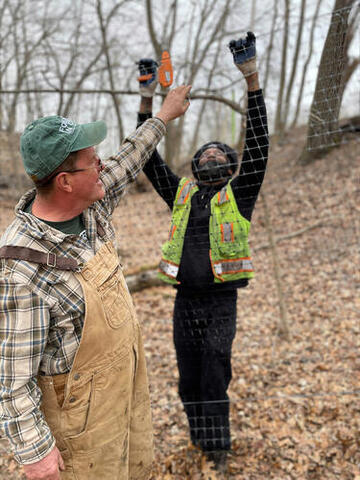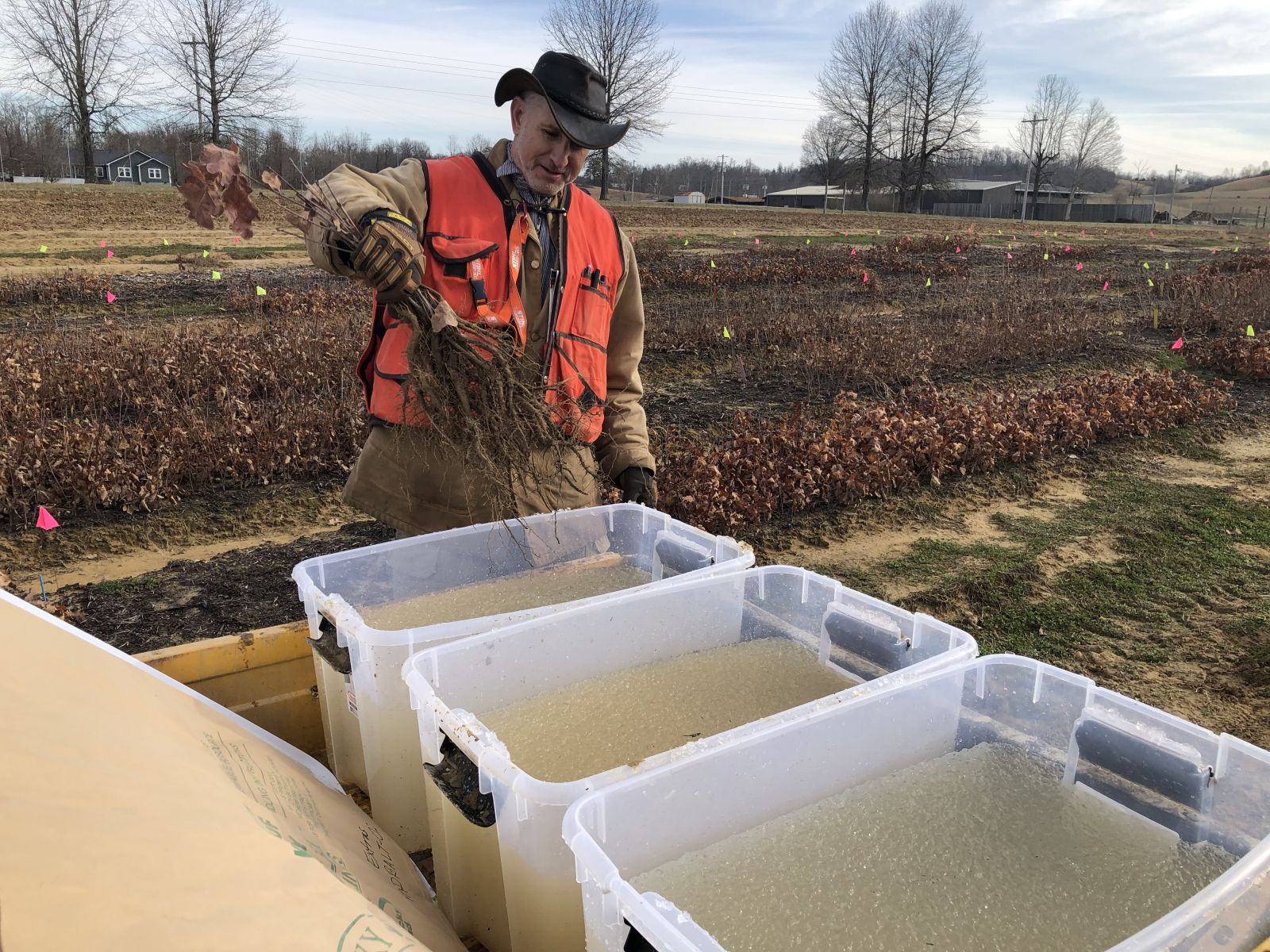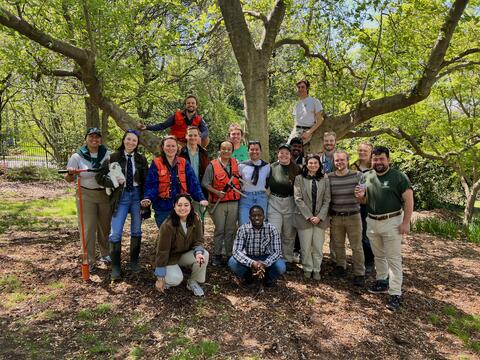
By Sara Santiago ‘19 MF
What is Silviculture?
Silviculture is often referred to as both an art and a science. Silvi, Latin for trees or forest, and culture, Latin for growing or cultivating, is the study and practice of establishing, growing, and managing forests for particular outcomes. Yale School of the Environment’s Professor of Silviculture and Forest Ecology Mark Ashton often tells students in his silviculture course that he is teaching them to become “tree doctors”—by determining how to discern the state and health of a forest, its growth, and how to cut, prune, and protect it for certain benefits.
We may commonly think of following silvicultural practices in large rural landscapes, but what about forests and forest patches in urban landscapes? City greenspaces provide shade and cooling to city residents, beautiful aesthetics, and habitat to migratory and native wildlife. They also brunt the impacts of climatic stressors like high winds, extreme heat and cold spells, and flooding and droughts. Max Piana ‘11 MEM, post-doctoral research ecologist at the U.S. Forest Service’s Northern Research Station, and his colleagues are rolling out a new research project, “Silviculture in the City: Urban and Climate Adapted Management Strategies for Forested Natural Areas in the Northeastern U.S. (link is external),” to apply rural silviculture practices to their cousin forests in cities with Yale forestry researchers, Urban Resources Initiative, and many partners.
Connecting at the Northeast Urban Silviculture Workshop in December 2020, the scientists and practitioners are collectively experimenting in upland oak forests in Baltimore, Md., Philadelphia, Penn., New Haven, Conn., and Springfield, Mass. “Originally, the meeting was to be hosted in person during the spring of 2020,” explains Piana. “But due to the pandemic, we switched to a virtual format. This was fortuitous, as we were able to include more cities and experts from across the East Coast, arriving at a climate adaptation study because of the latitudinal distribution of the participants and the enthusiasm to conduct a collaborative multi-city research project.”
The group is working under the projection that oak species will adapt to warming conditions along this latitude—as well as the high-emissions projection (link is external) that Springfield’s climate will be similar to southern Missouri’s in 2080.
Silviculture in the City:
Along the northeast corridor, Piana and his Forest Service colleagues are developing and testing silviculture practices that help greenspaces adapt to climate change, such as planting tree species that are resilient to insect and disease invasion to prevent future canopy loss. This is the most densely populated corridor in the United States and is also home to over 250,000 forests and forest patches. In this human-dominated landscape, many of the forest patches and small forests require management techniques that are distinct from those needed to manage individual street trees.
Described as “an overstory of trees with an understory of people,” these forest patches support the quality of life of human and wildlife populations, but these natural areas are vulnerable to many threats. According to the Northern Research Station, this patchwork mosaic is typically in “poor ecological health, threatened by climate change, impacted by pests and disease or overrun with biotic invasives,” which prevents the forest’s regrowth. The researchers warn that forest health and longevity will continue to decline without intervention and management.
Forest Service research ecologists, URI staff, professors from the University of Kentucky to the University of Massachusetts, municipal staffs, nonprofit practitioners, and faculty from The Forest School at the Yale School of the Environment, Mark Ashton, Marlyse Duguid, and Morgan Grove (also USFS) are all contributing to this effort. Project co-leads are Richard Hallett (USFS), who has collaborated closely with Ashton (YSE), and Tara Trammell (University of Delaware).
“It is really nice to see former master’s students who worked with URI to come back as Forest Service research scientists to engage with URI and the School as alumni,” says Ashton. “Piana and his colleagues are bringing back their expertise to work on urban forestry issues that URI now faces in New Haven—along with other eastern cities of the U.S.”

In early March 2023, USFS forest scientist Richard Hallett dips oak seedlings in hydrogel to prepare to ship them from a Kentucky nursery to New Haven. Photo by: Max Piana.
Experimenting from Acorns to Seedlings:
Urban Resources Initiative in New Haven, like its counterparts in other cities, is planting oak seedlings grown from the more than 100,000 acorns collected in six cities with Piana. These progenies will be brought to New Haven and to the three other cities to be planted in naturally occurring gaps within healthy urban forest stands. Each research plot will include 25 trees from each of the three cities and two southernmost sites, located in Kentucky and Tennessee, for a total of 150 oaks per research plot and 1,500 across the entire city of New Haven. Overall, 6,000 trees are being planted as part of the study in addition to another 4,000 trees in related project work. The partners will monitor the trees and measure their growth and survival rate over the next several years to determine which progenies perform best.
Max Piana guided URI staff, including Chris Ozyck and William Tisdale, who together with the EMERGE GreenSkills crew prepared the research plots in forest patches at East Rock and Edgewood Parks and the Yale Preserve during the winter months. In April, URI’s GreenSkills team will plant the oak seedlings, introducing the planting team to this urban silviculture strategy. A grant from the Wildlife Conservation Society supported URI to help carry out this work.
Hopes and Applications:
This collaborative project aims to identify and promote silvicultural practices that are effective in creating healthy, diverse forest patches in cities. “I’m excited that URI has this chance to learn how to better manage regeneration of oak species in our city’s natural areas alongside federal and local partners through this research project,” says URI Director Colleen Murphy-Dunning. “Not only will our staff understand new strategies for managing forested areas in changing climate conditions, but we also extend that opportunity to our planting teams, who can experience both planting trees along city streets as well as within natural areas.”




